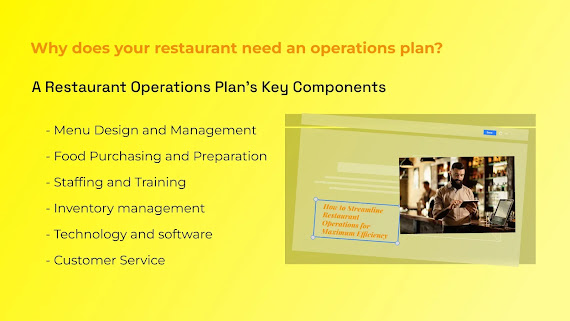The Comprehensive Guide to Restaurant Mobile POS Systems
In the realm of restaurants, innovation is often associated with new dishes and daily specials. Yet, the true innovation lies in the technology that powers everyday operations, enhancing efficiency. A mobile POS system can usher your restaurant into the future, bringing profound growth, operational excellence, elevated guest satisfaction, increased revenue, brand enhancement, and overall prosperity.
To stay ahead of the curve, adopt a customizable, flexible, and modern POS technology, the hallmark of cloud-based business management.
Understanding Restaurant POS Systems
A Restaurant Point-Of-Sale (POS) is a sophisticated computer system designed to streamline restaurant operations. POS signifies the time and place where a sales transaction is completed. Today's POS systems do far more than processing payments. Mobile POS systems allow restaurant staff to transmit orders to the Kitchen Display System (KDS), enabling efficient food preparation. Modern POS systems record sales data, facilitating inventory management and optimizing ordering practices.
A contemporary restaurant POS system comprises two components: restaurant hardware and software, operating harmoniously to deliver comprehensive functionality.
Why You Need a Restaurant POS System
A restaurant POS system performs several crucial functions:
Operational Streamlining: Automates tasks like order taking, inventory tracking, and reporting.
Accuracy Assurance: Ensures precision and error-free operations.
Enhanced Customer Experience: Speeds up ordering and offers flexible payment options, increasing customer satisfaction.
Real-time Data: Provides real-time insights into sales, inventory levels, and customer preferences.
Staff Management: Simplifies staff scheduling and performance tracking.
Billing and Accounting: Facilitates billing and accounting functions.
Comprehensive Reporting: Generates insightful reports for better decision-making.
How a Restaurant POS System Works
A restaurant POS system is central to a restaurant's management. Understanding its operation is essential:
Installation and Setup: The software is installed, and the entire system is configured.
Data Import: Relevant customer data is imported into the system.
Order Management: The POS system is used to manage orders.
Staff Management: It facilitates staff organization.
Inventory Tracking: The POS helps track inventory.
Quality Control: It supports quality control measures.
Customer Service: The POS enhances customer service.
Billing and Accounting: It handles billing and accounting functions.
Balance Sheet Creation: After payment, the system creates a balance sheet.
Reporting: The final step involves report generation.
Factors to Consider When Choosing a Restaurant POS System
Numerous restaurant POS systems exist, making the selection process challenging. Here are critical features to assess before deciding:
Inventory Tracking: Efficient stock level monitoring and cost-effective dish pricing.
Supply Chain Management: Ensuring optimal supplies and cost-efficient vendor management.
Customer Data Management: Tracking orders, preferences, and contact details to enhance customer service.
Table Reservation: Optimizing seating, tracking reservations, and enhancing the customer experience.
Insightful Reporting: Analyzing sales patterns, staff management, and informed inventory decisions.
Order Management: Streamlining orders for both staff and customers.
Integration with Other Systems: Streamlining operations by connecting with accounting, payroll, and online ordering platforms.
Customization: Tailoring the POS system to meet specific restaurant needs.
User-Friendly Interface: Reducing the learning curve for staff and ensuring maximum system utilization.
Customer Support: Reliable customer support, offering timely assistance and issue resolution.
Types of POS Systems
Various POS systems cater to specific business needs:
Cloud-based POS Systems: Web-based systems accessible from anywhere, offering scalability and real-time data analytics. They are cost-effective but require data security measures.
On-premises POS Systems: Traditional systems installed on-site, offering reliability and customization. However, they require significant upfront investments and ongoing maintenance.
Hybrid POS System: A fusion of traditional and cloud-based systems, combining reliability with flexibility and accessibility. These systems function even without a stable internet connection and provide advanced reporting features.
This guide equips you with the knowledge to make an informed decision when selecting a restaurant POS system. Consider your budget, unique requirements, testimonials, live demos, and recommendations to elevate your business to new heights. Make your restaurant business soar by making the right choice. Get in touch to unlock new possibilities.




Comments
Post a Comment